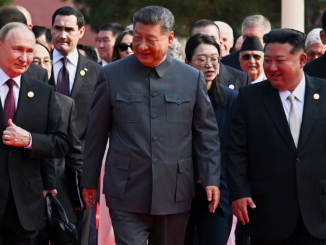
| Published May 29, 2025
Cuba: A Strategic Battleground in the US-China Rivalry
Cuba has re-emerged as a focal point in the escalating geopolitical contest between the United States and China. Recent developments suggest that the island nation is becoming a strategic outpost for China’s intelligence and military operations, raising significant concerns for U.S. national security.
China’s Expanding Intelligence Footprint in Cuba
Reports indicate that China has been enhancing its signals intelligence (SIGINT) capabilities in Cuba. Satellite imagery and analyses from the Center for Strategic and International Studies (CSIS) have identified multiple sites across the island, including Bejucal, Wajay, Calabazar, and El Salao, equipped with advanced antennas and facilities designed to intercept communications and monitor U.S. military activities.
Notably, the Bejucal site, located near Havana, is considered the most advanced, featuring underground facilities and antennas capable of intercepting satellite communications. The El Salao site, near Santiago de Cuba, is reportedly under construction and is expected to monitor U.S. naval activity, particularly around the Guantanamo Bay naval base.
These facilities are believed to be part of China’s broader strategy to enhance its global intelligence-gathering capabilities, particularly in regions close to U.S. territory.
Military Collaboration and Strategic Implications
Beyond intelligence operations, China and Cuba are reportedly deepening their military collaboration. In December 2024, high-level meetings between Cuban leaders and a Chinese military delegation signaled intentions to strengthen bilateral military relations. Discussions have included the potential establishment of a joint military training facility in Cuba, which could lead to a permanent Chinese military presence just 90 miles from the U.S. mainland.
Such developments have drawn parallels to the Cold War era, when the Soviet Union maintained a significant military and intelligence presence in Cuba. Analysts suggest that China’s activities in Cuba mirror the U.S. approach in Taiwan and the South China Sea, positioning Cuba as a potential flashpoint in U.S.-China relations.
U.S. Response and Regional Dynamics
The U.S. government has expressed concern over China’s expanding influence in Cuba. While official statements have varied, there is a growing acknowledgment of the strategic challenges posed by China’s activities in the Western Hemisphere. In response, the U.S. has signaled a shift in foreign policy focus toward countering China’s influence in Latin America and the Caribbean.
This includes diplomatic efforts to encourage regional partners to reassess their ties with Beijing. For instance, Panama recently announced it would not renew its Belt and Road memorandum with China, reflecting concerns over China’s growing regional footprint.
The implications of China’s growing presence in Cuba—just 90 miles from U.S. shores—are wide-ranging and significant. Here’s a breakdown of the key strategic, political, and security consequences:
1. National Security Threat to the U.S.
China’s intelligence-gathering operations near key U.S. military installations, such as Guantanamo Bay, pose a direct threat. Advanced SIGINT stations in Cuba could intercept sensitive military, diplomatic, and commercial communications.
2. Cold War Echoes and Strategic Pressure
This development mirrors Soviet activities during the Cold War, reviving fears of a hostile power establishing a foothold so close to U.S. territory. It puts pressure on Washington to bolster surveillance, naval readiness, and regional alliances.
3. Geopolitical Influence in Latin America
China’s military and economic expansion into Cuba signals its broader intent to reshape influence across Latin America—traditionally a U.S. sphere. This may embolden other nations to pivot toward Beijing, especially through Belt and Road-style investments.
4. Diplomatic Strain and Escalation Risks
Tensions between the U.S. and China may escalate. With both nations increasingly active near each other’s borders (e.g., U.S. in Taiwan, China in Cuba), the chances of miscalculation, proxy conflicts, or cyber confrontations rise.
5. Military and Intelligence Countermeasures
The U.S. may respond with increased funding for counterintelligence, new defense systems in the Southeast, and greater cooperation with regional allies. This includes surveillance over Cuba and potentially reasserting a larger naval presence in the Caribbean.
6. Regional Political Instability
Cuba’s alignment with China could intensify divisions in Latin America, affecting regional trade, governance partnerships, and diplomatic norms. Nations like Panama distancing themselves from China may indicate growing uncertainty or realignment.
Overall Takeaway:
Cuba’s strategic location and deepening ties with China have positioned it as a critical battleground in the ongoing U.S.-China rivalry. The establishment of Chinese intelligence and potential military facilities on the island underscores the shifting dynamics of global power and the resurgence of great power competition in the Western Hemisphere. As the situation evolves, it will be imperative for the U.S. and its allies to closely monitor developments and adapt their strategies accordingly.
SOURCES: THE GATEWAY PUNDIT – Cuba Now a Strategic Battleground for China Against the US
REUTERS – New Cuban radar site near US military base could aid China spying, think tank says
EAST ASIA FORUM – Cuba emerges as flashpoint amid US–China rivalry




